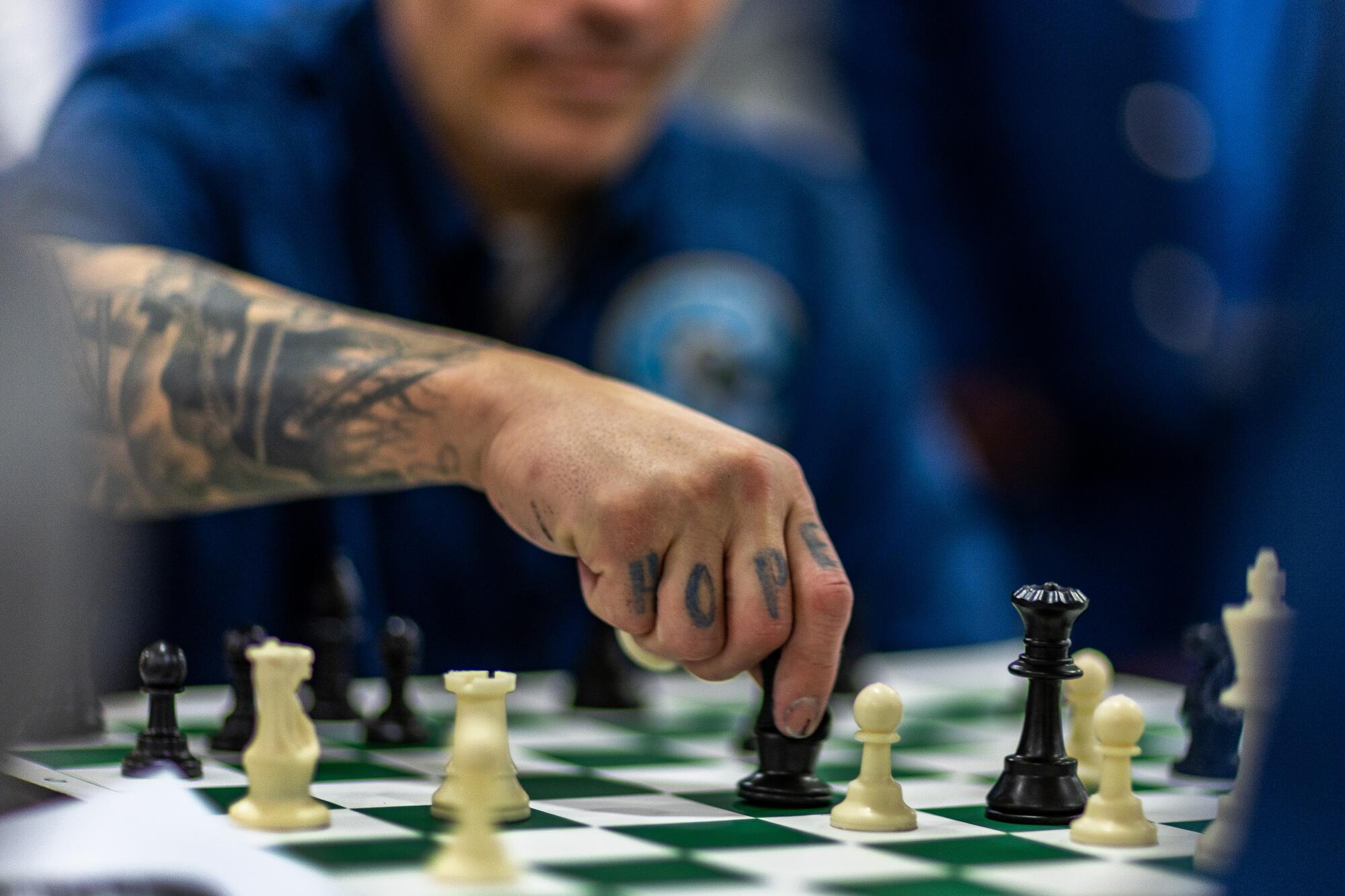
- Share via
SAN QUENTIN — To someone living outside these dank walls, the changes might seem small.
A sergeant greets a prisoner with “good morning” rather than barking an order. Guards start calling the prisoners “residents.” They shake hands, exchange jokes.
The toilet paper locker gets replenished when it’s empty. The men don’t have to ask.
At California’s oldest and most infamous state prison, a monumental shift is underway through an experiment dubbed the California Model, an effort Gov. Gavin Newsom announced in March 2023 to reimagine prison life, starting at San Quentin.
The changes are modeled after prison operations in Norway and other Scandinavian countries, where incarceration is considered less a tool for punishment than an opportunity for recovery and rehabilitation.
Newsom said he envisions a prison system that doesn’t just confine lawbreakers but better prepares them for reintegrating into communities after their release. That means expanding job training and substance-use treatment, but also replacing a prison culture built on hierarchy and fear with opportunities for connection and normalized social interactions.
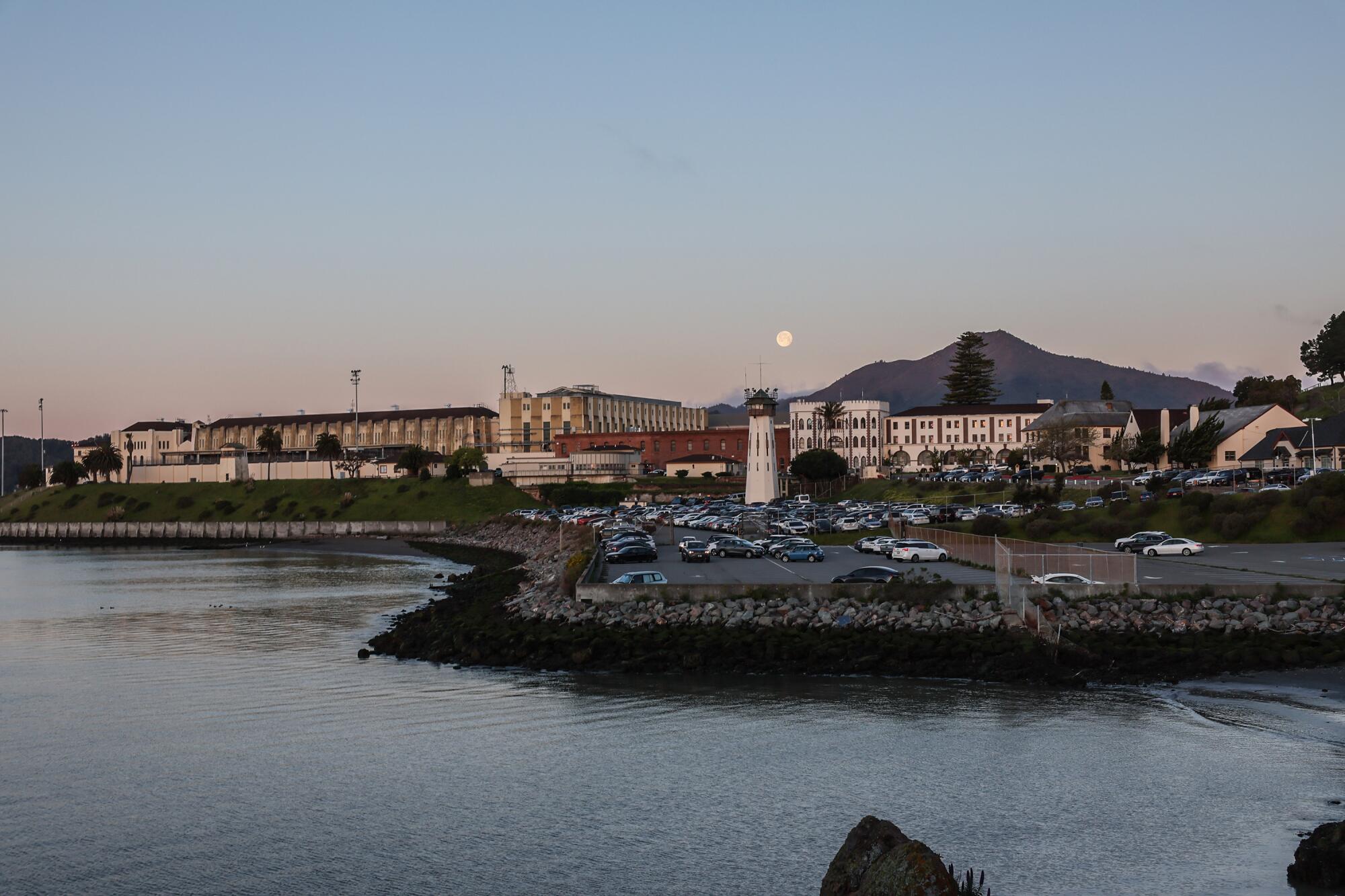
It will take years and hundreds of millions of dollars to fully implement the California Model at San Quentin. And whether there’s support for expanding the approach across the state’s 32 prisons hinges on what plays out at this 172-year-old institution over the next few years.
In some ways, San Quentin was the easiest place to start.
Perched on some of the most expensive real estate in California, the prison’s Marin County location affords connections with a host of progressive Bay Area research and legal aid groups eager for reform work.
The prison also encompasses the extremes of corporal punishment: Until recently, it housed the state’s death row for men, a grim unit of concrete and iron, where narrow cells are stacked five stories high. There, some of the state’s most brutal sociopaths and serial killers have lived out their days in what is effectively solitary confinement.
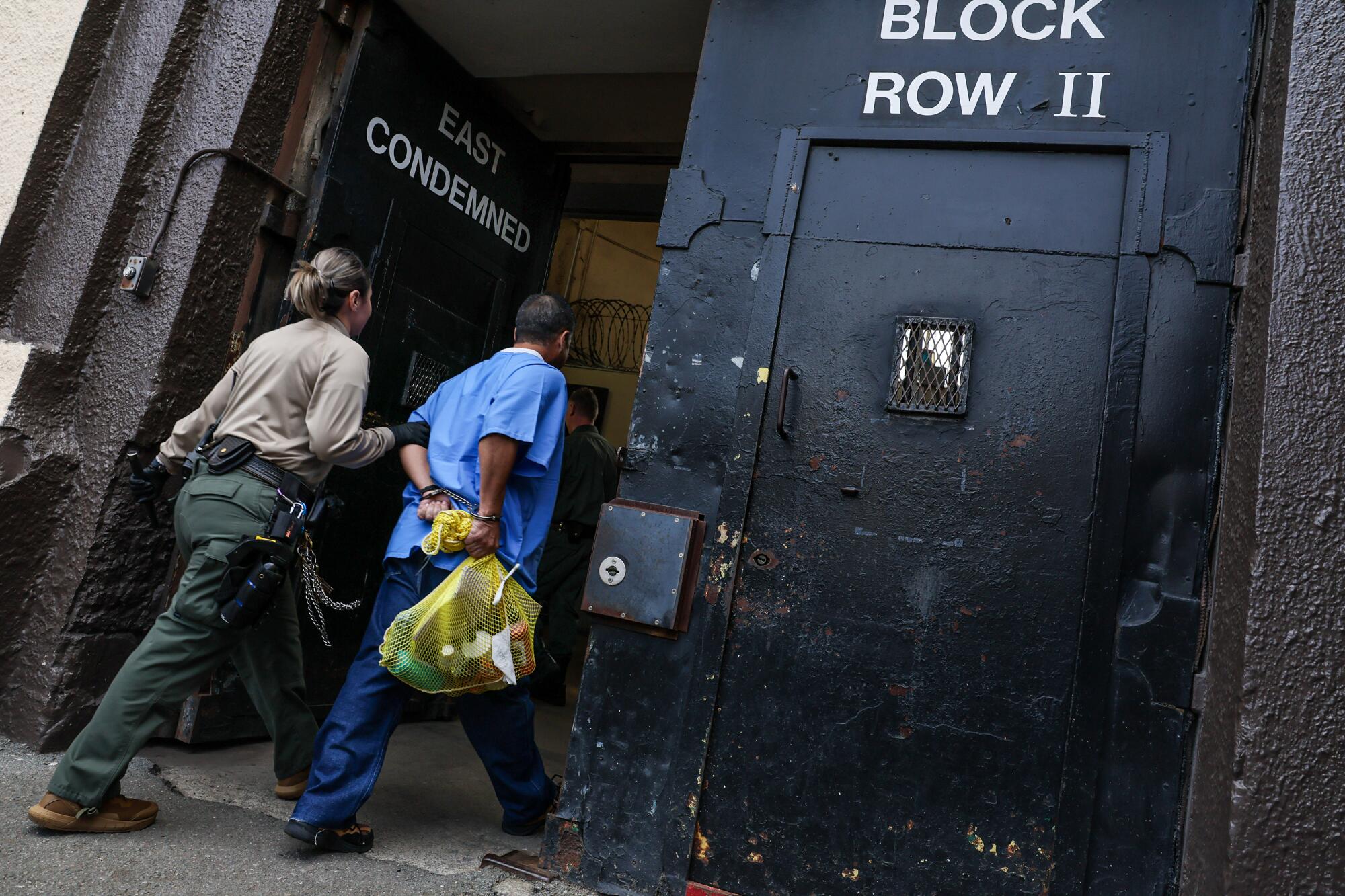
Outside death row, most of San Quentin’s 3,400 inmates are housed in units with medium-security ratings. That means, whether because of the nature of their crimes or their behavior in prison, they’re considered at relatively low risk of violence and allowed to gather in common areas for some portion of each day. The prison has developed an abundance of rehabilitative programs, including coding classes and a media center that’s home to an acclaimed prisoner-run podcast and newspaper.
At Newsom’s direction, the state Department of Corrections and Rehabilitation has spent the past year emptying death row, systematically transferring the roughly 630 condemned men to other prisons. San Quentin is to be reenvisioned as a full-out rehabilitation center that builds on the existing programs.
“It’s not nearly finished, but some of the most significant innovations in the corrections system in California were occurring and have been occurring at San Quentin for a long time,” said Sacramento Mayor Darrell Steinberg, a longtime Newsom ally and lead advisor of a 21-person council charged with bringing the California Model into focus.
The next major step is a projected $239-million construction project to bulldoze an old factory on the prison grounds and replace it with airy classrooms, a fresh foods market and, one day, a prisoner-run coffee shop.
But transforming the culture will take more than bulldozers and lattes. The model relies on a dramatic shift in relations among officers and prisoners, two historically warring factions in a system built on clannish gamesmanship for survival.
And that’s proving more complex than building a cafe.
“We, the incarcerated person, are indoctrinated. The staff are as well,” said Steven Warren, a prisoner serving time on a domestic violence conviction and also a leader with San Quentin SkunkWorks, a nonprofit made up of prisoners and outside advocates focused on criminal justice reform.
Those interpersonal changes require a level of vulnerability in a culture that is wary of trust and unaccustomed to change, Warren said.
To break through some of the barriers, SkunkWorks coordinated a chess tournament in March between prison staff and prisoners, with checkered tables set up in a gym in the prison yard. Officers in green uniforms sat on one side, incarcerated men in their prison blues on the other.
Some players seemed skeptical, sitting in silence and studying their boards without making eye contact. Others seemed to enjoy the rivalry, trading biting barbs about their opponent’s skills.
At the far end of one row, officer Richard Kruse claimed an easy victory over Jessie Milo after knocking his rook out with a bishop.
1
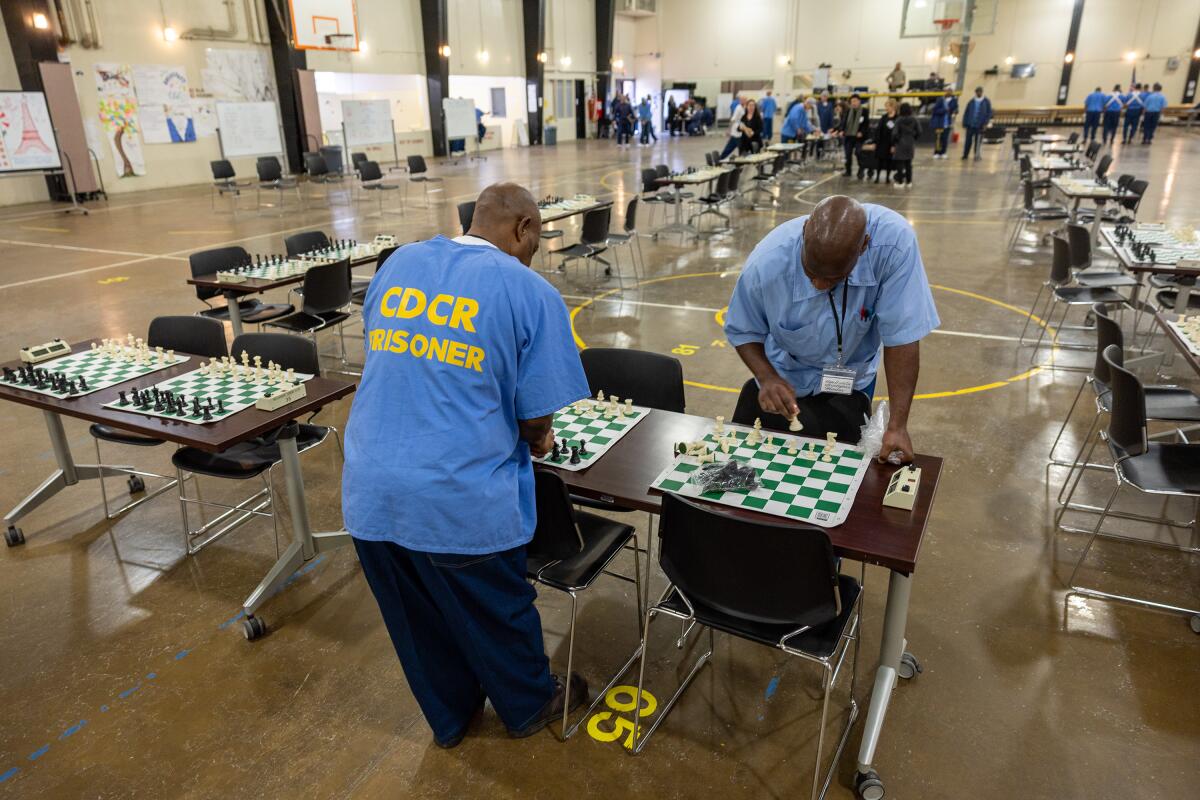
2
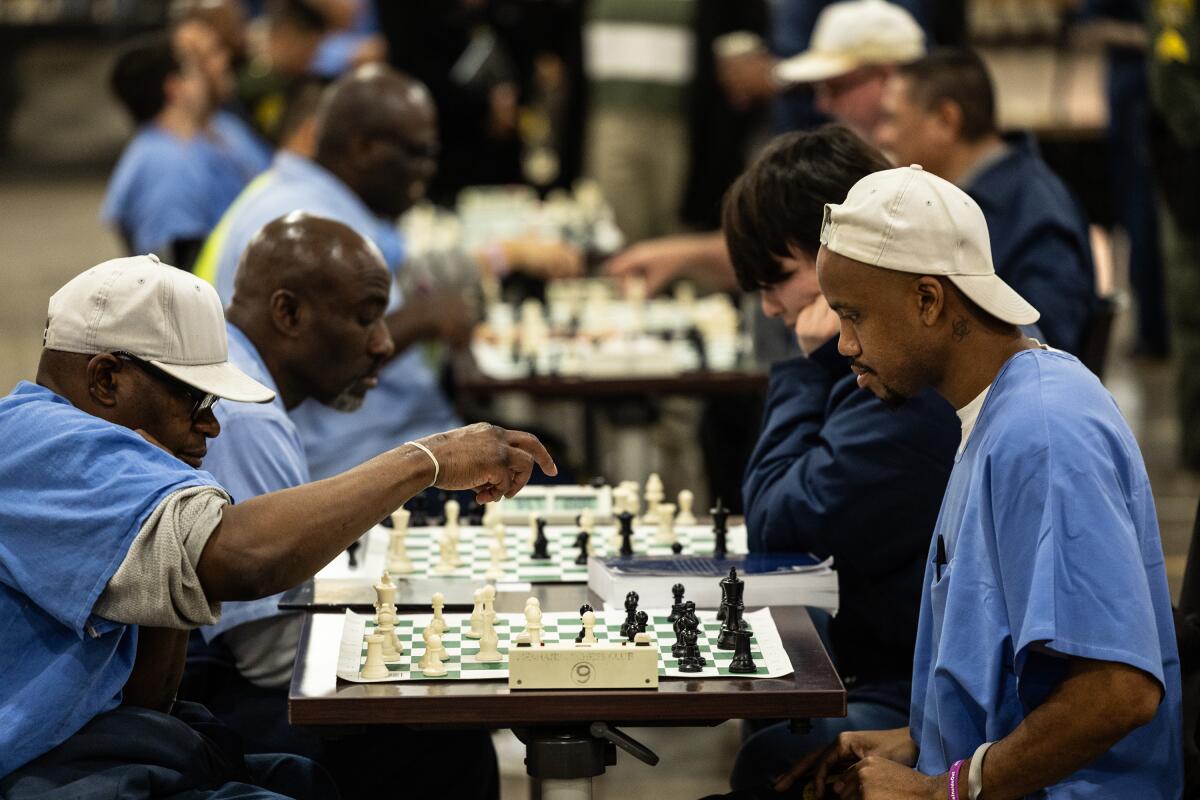
3
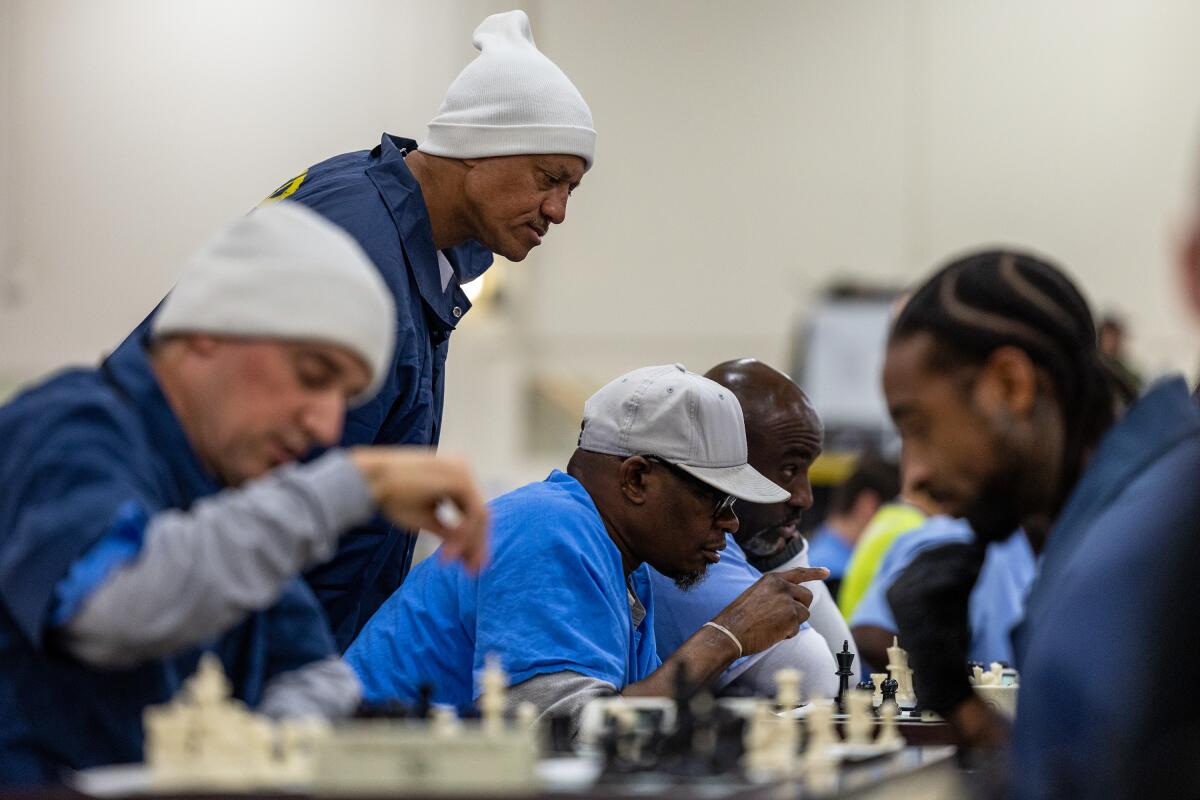
4
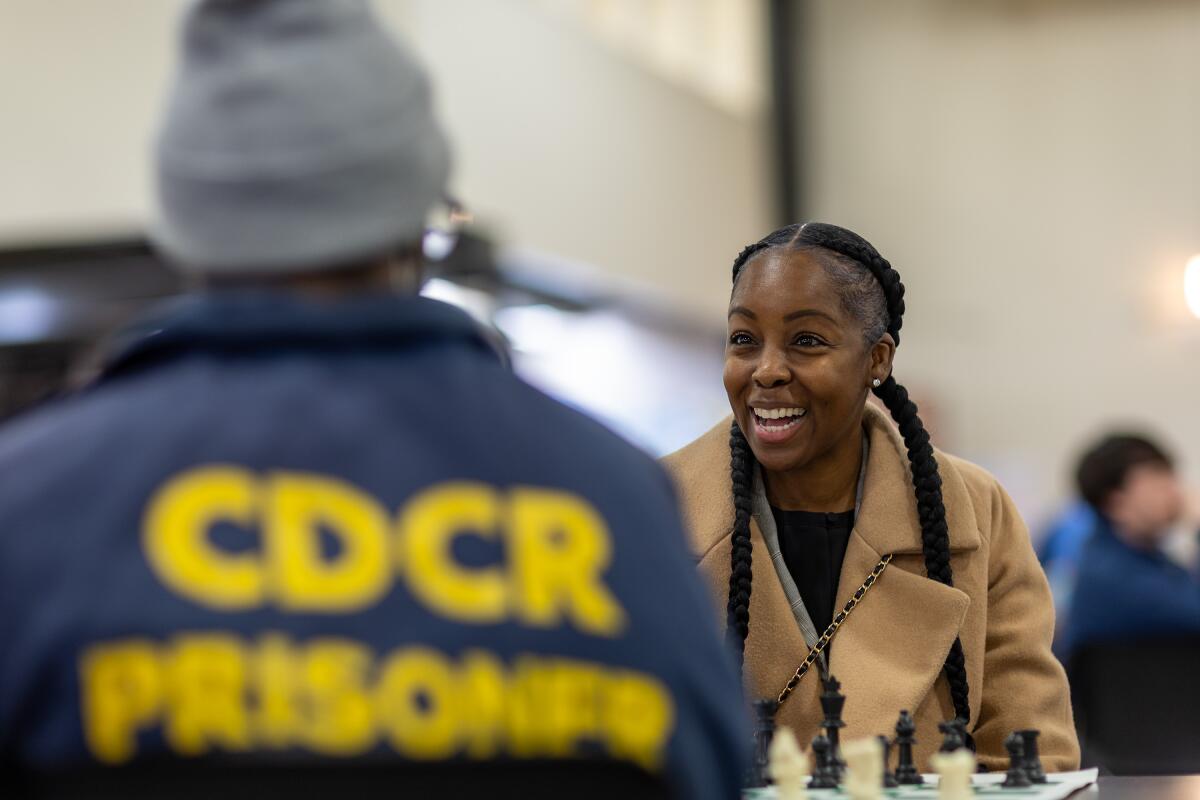
1. San Quentin SkunkWorks hosted a guard-vs.-prisoner chess tournament at the prison, hoping to break down barriers between the historically warring factions.

“He was so sure,” Kruse laughed, poking fun at Milo’s strategy. He offered friendly feedback for the next game.
“I’ve taken advice from a [corrections officer] before and ended up in the hole,” Milo said, only half joking. He was referencing a history in some prisons of guards egging on inmate violence only to throw people into solitary confinement afterward.
Kruse knocked his head back and gave a great bellow. “He’s not going to the hole today,” Kruse said.
Milo, 44, is serving a life sentence for attempted murder, tied to a shooting he committed in his 20s. He’s developed an interest in art at San Quentin and serves as a mentor to younger men coming in. For the chess tournament, he designed a “California Model” poster to hang in the gym, painted half in blue for the imprisoned, half in green for the guards.
Milo wants to see the California Model succeed: “We can’t keep fighting each other expecting a different outcome,” he said. But he can’t help but have doubts.
Along with chess matches, San Quentin is hosting kickball tournaments and flag football games as a way to foster more collegial relations. But prisoners are still locked down for several hours a day in cramped cells — two men sharing dingy 5-by-11-foot quarters crammed with bunk beds, a toilet and a sink — without access to programming or family visits, Milo said.
Other than Kruse and a handful of other officers, Milo said, most prison staff are at best resistant, more often hostile, toward the changes.
“They feel the incarcerated people are being coddled,” Milo said. “The California Model is not really a grand gesture. The California Model is just kindness, courtesy and normalcy.”
Kruse, 31, with an easy manner and boyish grin, is one of the few openly enthusiastic supporters of the California Model.
His mom worked in administration at San Quentin, so Kruse has lived on the prison grounds since he was a kid. He joined the guard ranks at 21 and says he loves his job so much, it would take something “catastrophic” to leave — like “an earthquake shifting San Quentin into the sea.”
The work feels personal. In 2013, his mom had a heart attack on the job. She survived because a prisoner performed CPR long enough to stabilize her before paramedics arrived. Her survival is something he keeps in mind as he walks the yard — and before he decides to write someone up for a rules violation.
“I’ve always been a big believer that a lot of the way we go about treating at least most of these guys is kind of unnecessary,” Kruse said. “So when [the California Model] became an official policy, I was stoked.”
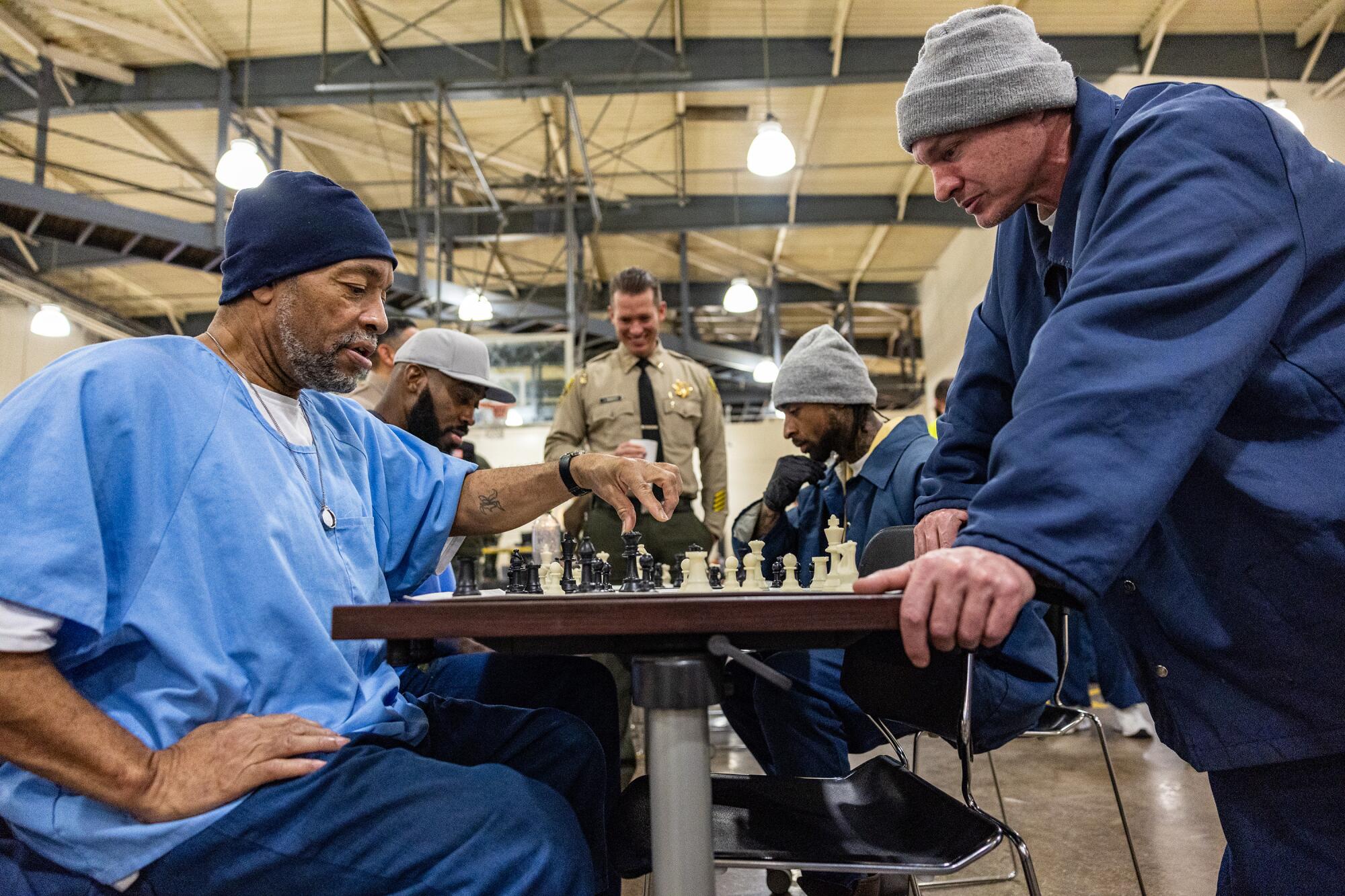
Kruse was placed on a “resource team” to help with the cultural shift, one of a small group of officers who help set up events such as the chess match and work with condemned men preparing to transfer out of death row.
Multiple times a week, Kruse engages death row prisoners, first conversing through the bars, then inviting someone to join him in an old prison hospital room repurposed for social interaction. The room is decorated in a kaleidoscope of murals painted by condemned men, and stocked with board games.
An avid gamer, Kruse brought in his Nintendo Switch and spent some of his own money to fill the shelves with games such as Uno, Just One and Tsuro. His hope is to use the games — and the interaction around friendly competition — to model “pro-social behavior” for men preparing to transfer to other prisons.
As part of the death row dispersal, many of the condemned men will be able to mix with the general prison population at their new facility. For most, it will mark an unsettling shift after decades of near-total isolation at San Quentin.
On a recent June day, Kruse sat in the room with Wayne Adam Ford, a convicted serial killer who in 1998 turned himself in at the Humboldt County Sheriff’s Office carrying a woman’s severed breast in a plastic bag. Ford said the sessions have helped him reacclimate to other humans after years of living in the darkness of his mind.
“I wasn’t sane then. I’m not sure I’m all that sane now,” he said. “But I’m saner than I was.”
The interactions can be uncomfortable, Kruse said. But he considers the lessons in socialization worth it — both for the guys who will never get out of San Quentin and especially for the many men who eventually will.
“There’s a lot of people at San Quentin that have either already halfway turned their lives around, or are trying to get that push to turn their lives around,” Kruse said. “They’re gonna leave someday. ... That’s going to be your neighbor, might be your family member’s neighbor. Those guys, if I can work with [them] to make [them] better, that, to me, is what it’s about.”
Still, Kruse concedes he’s an anomaly. He estimates he’s among 5% of staff who consider themselves avid supporters of Newsom’s vision. But it’s a start. “As far as it comes to getting staff onboard, I think every institution has at least a few people who are willing to give this a genuine shot,” he said. “And from there ... it’s like pebbles down a mountain.”
California prison officials announced they will move the last 457 condemned prisoners out of San Quentin’s death row by summer. They will be transferred to other state prisons and housed in the general population.
Tiffanie Thomas, legislative relations representative for the California Correctional Peace Officers Assn., the union representing 27,000 corrections workers, takes a more skeptical view.
Though Thomas is generally supportive of the California Model — and any reforms that would make prison work less stressful — she said many officers worry that the push for a more “Shangri-La, fa-la-la” environment poses a safety threat. Officers spend their shifts with their heads on a swivel, she said, ever on guard in case a fight breaks out or they’re attacked. After all, it’s “still prison.”
“Nobody is focusing on the fact that if something happens, we still have to be trained to do certain things,” Thomas said. “Just because we’re calling something pretty doesn’t make it actually pretty.”
Adding to the challenges: Even after a decade of legislative efforts to ease sentencing laws, California remains a state of mass incarceration.
The state’s prison population is vastly larger and more complex than the prison system in Norway that the California Model draws on for inspiration. While Norway’s longest prison term is typically two decades, more than 30,000 people are serving life sentences in California.
Steinberg, the advisory council chair, acknowledged the major differences. “We’ve never said that we’re just going to take the Norway Model and put it on top of California and boom, that’s the change.”
Still, he said, the idea that California should be doing more to prepare people for life outside prison — giving them the social skills and training they need to thrive once they’re released — seems not only humane but a wise investment given the costs of incarceration.
“I really am a big believer that the way you make systemic change is to plant a big seed,” Steinberg said, adding that it also requires patience. “It’s going to take — I don’t know how long — hopefully less than a generation.”
Miguel Sifuentes is among those who want to believe the changes underway will be meaningful.
Sifuentes, 45, is serving a life sentence for first-degree murder, stemming from his role in the 1998 shooting death of a sheriff’s deputy in Alameda County. During his decades behind bars, he’s tried to improve himself through classes and self-help programs.
Sifuentes took part in a basketball game between prisoners and guards in November that was covered by a local TV station. During an interview after the game, Sifuentes called out to one of the guards, who ran over and embraced him in a warm, unscripted hug. Sifuentes, overcome with emotion, sobbed on the officer’s shoulder.
Hugging the officer was a “restorative moment,” Sifuentes later told The Times, “a small amend to the law enforcement community” he harmed 26 years ago.
For Sifuentes, who has twice been denied parole, the notion of a kinder, gentler San Quentin has appeal. It is for now — and maybe forever — his home.
But the more contentious changes, he said, lie ahead. There’s such a “narrow way out of this place,” Sifuentes said. What will it take for the state to recognize his remorse and rehabilitation? And for the public — even the guard who embraced him — to welcome him home as their neighbor?
“Is California,” he asked, “willing to have the harder conversations about who we are going to let out?”
More to Read
Sign up for Essential California
The most important California stories and recommendations in your inbox every morning.
You may occasionally receive promotional content from the Los Angeles Times.












